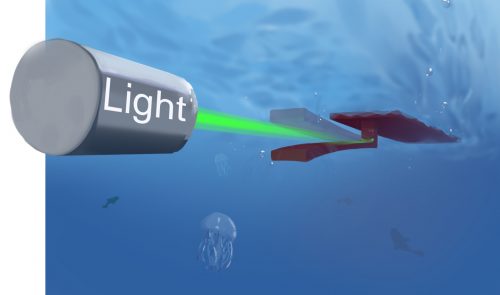Roboticists have often found inspiration in the oldest innovator in the world, Mother Nature. Recently, scientists have been interested in a type of locomotion called phototaxis. Phototaxis is an organism’s response to light; it is the mechanism used by jellyfish and many insects.
In the past, soft robots lacked the ability to respond remotely and precisely to a light source, which made them impractical to deploy. Many soft robots were also unable to generate enough force to overcome water resistance. Professor He and her research team from UCLA turned to material science to face these problems. She set out to create a material that could both react to ambient light and generate enough oscillatory force to overcome water resistance. Professor He also wanted to be able to both control and tune the material’s autonomous control with high precision.
He and her research team discovered a material that could respond to a constant external stimulus, generate a continuous negative feedback loop to accurately control the movement of the robot, and produce enough oscillatory force to overcome water resistance. To design this smart photo-oscillatory material, the team combined photoabsorbers, a material that absorbs light energy, with thermally responsive hydrogels, a hydrophilic polymer that experiences physical or chemical changes as a result of thermal stimuli. He and her research team optimized the material composition to maximize light responsiveness in varying ambient environments and improve the soft robots’ autonomous control.
The robot’s autonomous control mechanism operates in response to light. Specifically, if light is shined on a position of the flipper, then the flipper bends upwards and oscillates, moving the robot away from the light and towards the intended path. “We hoped to provide more intelligence through the material without heavily relying on the control program,” He said. The material He’s group discovered has several applications due to its elegance and simplicity. He implemented artificial phototaxis in OsciBot, an underwater, autonomous robot that does not require batteries but rather uses visible light as an energy source to both power and direct movement. This research can be leveraged towards creating a robot that could autonomously scavenge for objects in the ocean and making the next generation of maneuverable marine automated systems. In the future, soft robotics could be applied towards numerous surgical applications as well, where high precision is required. He’s work hints at a bright future for soft robotics, which will continue to draw inspiration from mother nature’s innovations.

